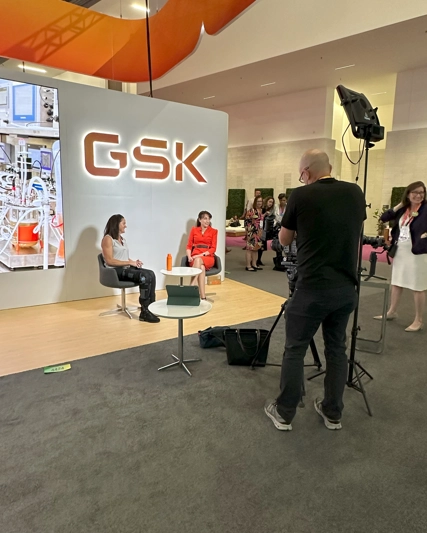US FDA approves new fully liquid presentation of GSK’s ROTARIX vaccine to prevent gastroenteritis caused by rotavirus
For media and investors only
- New fully liquid formulation of ROTARIX removes the need to reconstitute prior to administration, for improved convenience
- Clinical data demonstrated non-inferiority of immunogenicity as compared to the lyophilized formulation of ROTARIX and showed similar safety and tolerability
GSK plc (LSE/NYSE: GSK) today announced that the US Food and Drug Administration (FDA) has approved an oral-dosing applicator-only presentation (liquid formulation) of ROTARIX (Rotavirus Vaccine, Live, Oral), which prevents rotavirus gastroenteritis caused by G1 and non-G1 types (G3, G4 and G9) in infants. This new presentation formulation aims to make it more convenient for healthcare providers to prepare ROTARIX by removing the need to reconstitute the vaccine dose at the point of use.
“Achievements like this are at the heart of our quest to reduce barriers to vaccination and remain a vital public health tool against the threat of preventable infectious diseases like gastroenteritis caused by rotavirus,” said Temi Folaranmi, MD, Vice President US Medical and Clinical Affairs, Vaccines, GSK, “By creating a liquid formulation of ROTARIX that can be administered without additional mixing on site, we aim to give healthcare providers a more convenient option.”
ROTARIX was first approved by the FDA in 2008, and until now, it has only been available in the US as a vial and oral dosing applicator presentation (lyophilized formulation), which must be reconstituted before administration. The new oral-dosing applicator-only presentation is fully liquid and does not require reconstitution prior to use. Both the lyophilized and liquid formulations of ROTARIX are given by mouth as a two-dose series and contain the same live, human attenuated rotavirus strain and are manufactured using similar processes.
Today’s approval of the liquid formulation of ROTARIX is supported by international clinical trial data demonstrating non-inferiority of immunogenicity and showing similar safety and tolerability when compared to the lyophilized formulation. Doses of ROTARIX in the liquid formulation are expected to begin shipping in early 2023.
About rotavirus
Rotavirus can cause severe, watery diarrhea as well as vomiting, fever and abdominal pain in infants and young children. Children may need to be hospitalized and can even die due to dehydration.1 Before vaccines were available, nearly all children in the US became infected with rotavirus before their fifth birthday. Now, rotavirus vaccines are estimated to prevent about 40,000-50,000 hospitalizations among infants and young children in the US each year.2
About ROTARIX
ROTARIX is a vaccine indicated for the prevention of rotavirus gastroenteritis caused by G1 and non-G1 types (G3, G4, and G9) when administered as a 2-dose series. ROTARIX is approved for use in infants 6 weeks and up to 24 weeks of age.
The US Prescribing Information is available at:
Important Safety Information for ROTARIX
The following is based on the US Prescribing Information for ROTARIX. Please consult the full Prescribing Information for all the labelled safety information.
- Contraindications for ROTARIX include a history of any of the following: hypersensitivity to the vaccine or any component of the vaccine; uncorrected congenital malformation of the gastrointestinal tract (such as Meckel’s diverticulum) that would predispose the infant to intussusception; intussusception (in postmarketing experience, intussusception resulting in death following a second dose has been reported following a history of intussusception after the first dose); or Severe Combined Immunodeficiency Disease (SCID)
- The tip caps of the prefilled oral dosing applicators contain natural rubber latex, which may cause allergic reactions
- Administration in infants suffering from acute diarrhea or vomiting should be delayed. Safety and effectiveness in infants with chronic gastrointestinal disorders have not been evaluated
- Safety and effectiveness in infants with known primary or secondary immunodeficiencies, including infants with human immunodeficiency virus (HIV), infants on immunosuppressive therapy, or infants with malignant neoplasms affecting the bone marrow or lymphatic system have not been established
- Rotavirus shedding in stool occurs after vaccination with peak excretion occurring around Day 7 after Dose 1. One clinical trial demonstrated that vaccinees transmit vaccine virus to healthy seronegative contacts. Caution is advised when considering whether to administer ROTARIX to individuals with immunodeficient close contacts
- A study conducted after approval of ROTARIX showed an increased risk of intussusception in the 31 days after the first dose of ROTARIX, especially in the first 7 days. In other reports, an increased risk of intussusception has been observed within 7 days after dose 2
- Safety and effectiveness of ROTARIX when administered after exposure to rotavirus have not been evaluated
- In clinical studies, common (≥5%) solicited adverse reactions among recipients of ROTARIX included fussiness/irritability, cough/runny nose, fever, loss of appetite, and vomiting
- Safety and effectiveness of ROTARIX in infants younger than 6 weeks or older than 24 weeks of age have not been evaluated
- The effectiveness of ROTARIX in pre-term infants has not been established
- Vaccination with ROTARIX may not result in protection in all vaccine recipients
About GSK
GSK is a global biopharma company with a purpose to unite science, technology, and talent to get ahead of disease together. Find out more at gsk.com/company
Cautionary statement regarding forward-looking statements
GSK cautions investors that any forward-looking statements or projections made by GSK, including those made in this announcement, are subject to risks and uncertainties that may cause actual results to differ materially from those projected. Such factors include, but are not limited to, those described in the Company's Annual Report on Form 20-F for 2021, GSK’s Q3 Results for 2022 and any impacts of the COVID-19 pandemic.
1 Centers for Disease Control and Prevention. Rotavirus. Available at: https://www.cdc.gov/rotavirus Accessed November 2022.
2 Centers for Disease Control and Prevention. Rotavirus in the US. Available at: https://www.cdc.gov/rotavirus/surveillance.html Accessed November 2022.


